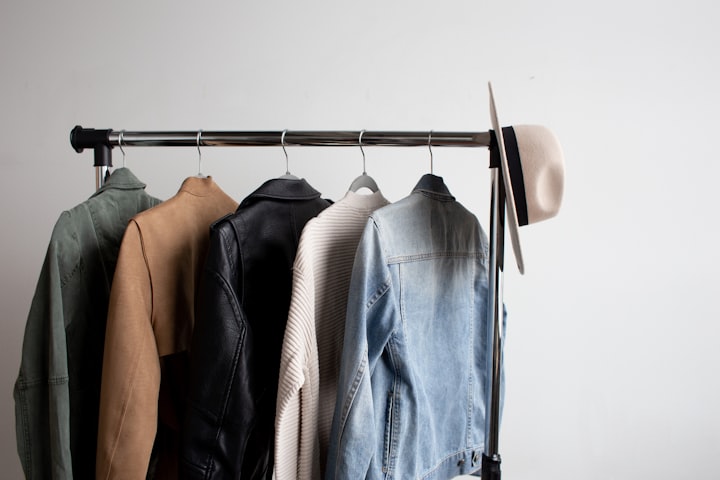The Fallacy of the Thrift Shop
You can't buy your way out of overconsumption

The fallacy of the thrift shop is that it is simultaneously one of the best tools that we, as individuals, can have to fight over-consumerism and one of the tools that have been warped to support over-consumerism. The rise of thrift shops is often taken as a sign that more people are engaging with circular economies or at least thinking of reusing their items and giving them a new life by allowing others to have them. Yet both buyers and donators of thrift shop items, particularly clothes, are contributors to this fallacy.
You can't buy your way out of over-consumption
This is perhaps the biggest individual fallacy of the thrift shop. Consumers who were previously looking for an infinite amount of clothes from fast fashion are looking to thrift stores as cheap alternatives. The rise of over-consumption has been marked by people who wear clothes once before either returning them or throwing them away (not that it usually makes much of a difference, since clothes that are returned to fast fashion retailers are frequently thrown away anyways), it doesn't address the root of the problem. You cannot buy your way out of over-consumption. The focus is still on cheap, trendy products that will eventually deteriorate or be thrown out of the cycle. This doesn't close the cycle, simply prolongs it a bit. To make a closed loop system, we have to shift our focus away from buying to our heart's content and looking for high quality items that will last us for years, if not generations. This will require a massive counter-cultural shift, away from the instagram-ification of outfits that dictate that we cannot be seen in outfits more than once. It will require us to think carefully before we buy, and not use thrift shops to replace other retailers as a dopamine hit for when we're down.
Thrift shops have always been a way for people of lesser means to buy high quality clothes. There has been an argument in recent years that thrift stores are actually gentrified, pushing out buyers who can't otherwise afford high quality clothing. There is both truth and not to this concept. On one hand, there have been a gentrification of thrift store, and people are becoming increasingly priced out of places they used to shop. On the other hand, there is no actual shortage of clothing going towards thrift stores, which will be covered presently. I personally choose to live by the words of the ineffable Aja Barber. In short, she says that thrift shopping isn't the huge gentrification problem it's made out to be provided that people don't try to flip clothing, which is where the bigger problem comes from.
So despite its issues, thrift shopping still remains the more ethical way for us to buy new clothes. Just don't use it as a replacement for retail therapy or try to take advantage of lower income communities by flipping cheap clothes to make a profit for yourself.
Stop donating your trash to thrift shops
Thrift stores are not trash cans! They cannot do more with your broken, stained clothing than you can yourself. In addition, many thrift store items actually end up in LECD countries, ruining their local clothing economies as they are inundated with second hand and unsellable clothes. This creates a secondary issue where LECD countries are actually losing a huge part of their economy as OECD countries cripple their domestic economies, making this part of a systematic issue that must change. But to do our part, we should be careful about what we donate. There is no shortage of clothing being donated to thrift stores. So make sure that your clothes are clean and something that you yourself would be willing to wear and use. In addition, try out your other avenues first. Arrange clothing swaps with your friends so that you can expand your wardrobe, or sell it on Depop or other second-hand websites that are buyer-to-buyer. Find a way to repurpose your clothing--if it truly is torn and tattered beyond relief, perhaps use it as a rag, or find someone who can use it as a project or make a mop out of it. There are many ways to reuse and recycle clothing and donating it to a thrift store should not be the first one on the list. Unless you are certain that it is an item that will sell well, aim for other ways to extend its life cycle. And if it truly is at the end of its life cycle, look for ways to recycle it via clothing recycling programmes so that it does not end up in the trash.
In conclusion, thrift stores are a great symboliser of change. It represents the idea that we can go back to a mindset that values a circular life cycle and circular economy, something that will help keep items out of the trash and stop microplastics from leeching into our oceans for longer. But it in itself cannot bring the change that we so desperately need. We need to change our attitudes as well as our habits. We cannot think of thrift stores as a source for our endless buying and we must stop thinking of the people who buy from thrift stores as so needy that they ought to be grateful for our trash. And perhaps, if we can shift the cultural thought process, we can realise the full potential of the thrift shop.
About the Creator
Melissa in the Blue
hold my hand and we can jump straight into the cold unloving sea






Comments
There are no comments for this story
Be the first to respond and start the conversation.